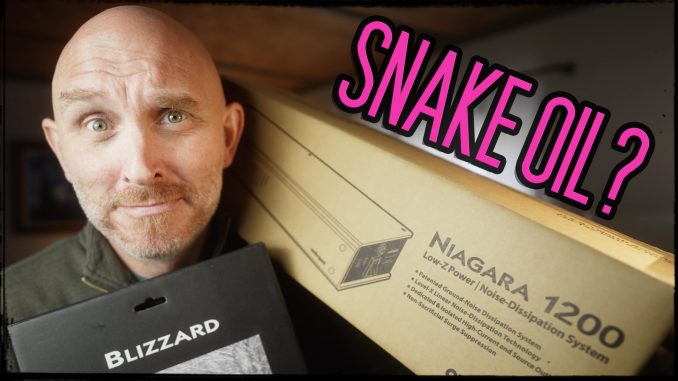
The Audioquest Niagara 1200 Power Conditioner. Worth it for your HiFi?
Being an avid music lover and someone who gets a small inside look at the audio industry I sometimes get to see some crazy snake oil products come to market. I mean, some of them are ridiculous. Usually priced insanely high and they do nothing for the sound of your system. There are a handful of shady manufacturers out there ready to seize on the audiophile personality who will stop at nothing to keep improving the sound of their system. Some see this as part of the hobby.
In fact, being an obsessed audiophile is not so much about the music, rather it is about the gear, the improvements, the tweaks, the hobby, the fun of trying new things. It is more of a passion and also a compulsion. I used to call myself an audiophile but these days I downgraded to “Music Lover” ; )
The audiophile is the one who is always tweaking their system. Maybe they buy a $300 fuse as they are said to improve the transparency of their system. Maybe a stone that sits atop an amp to “stabilize it’ and make it sound better. There are many products like this. I remember one long ago which was nothing more than a magic marker. When the ink from this marker was used to draw markings on your CD’s in a specific way…BAM! Better sound. Those were the claims anyway. I tried it and it did nothing but make marks on my otherwise perfect CD’s.
Yes, there is indeed plenty of “snake oil” within the HiFi/Audiophile community. I should know as I have owned and tried out many of these “snake oil” products over the years! So yes, these days I am very skeptical of oddball products that are said to improve your system in the strangest of ways.
This leads me to power conditioning which some in the audio community consider “Snake Oil”.
My feelings on this are that Power Conditioning within your HiFi system is not Snake Oil at all but at the same time, it may not be for everyone.
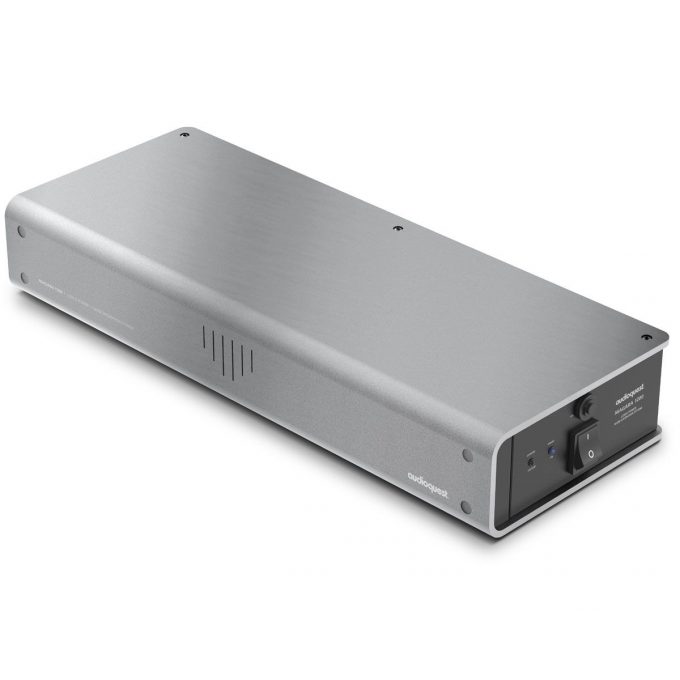
Power Conditioners for your HiFi system.
It’s a fact. Many of us do have “dirty” power within our homes and apartments. Noise comes from our electrical lines that can bring nasty noise into our delicate and finely tuned audio systems. For some of us we may not even notice or hear this noise…until it is gone. For others it may bug us to no end. A hiss here, a buzz there. It can get annoying.
I remember 20 years ago having an annoying hum in my system, and it was audible during late night listening. It bugged me so much that I stopped listening to music for a while.
Power Conditioners and other boxes dealing with our power have been a thing for a long long time within the audio community. I owned one of the very early units crazy years ago and it was made by none other than MONSTER. Remember Monster Cable?
I do and I also remember when many thought they were the best cables ever made! Monster was sort of the Bose of speaker cables and I remember thinking how $200 seemed crazy for a set of their speaker cables back then. I even once owned a set of speaker cables from Monster that set me back $599 and even came with a hard shell briefcase. (They were not that great but I used them for 3 years anyway).
Monster Cable also became known as Monster POWER and released a black box that was said to keep your power steady. It kept the voltage steady so your gear could benefit from a rock solid power source. I owned one. I found that it did nothing for my audio system back then. At all. It looked cool, and did keep the voltage rock solid. Even so, I remember having regret at that purchase as it did nothing for my audio system that I could hear, feel enjoy.
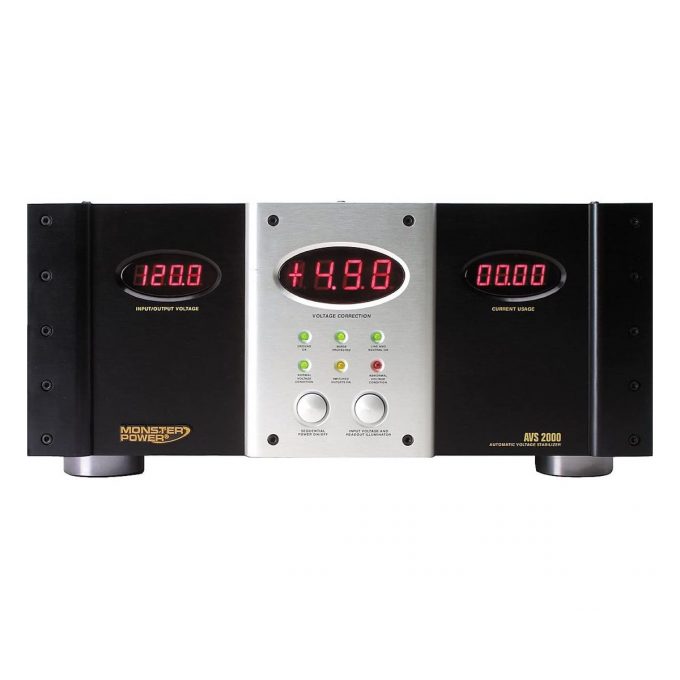
While that Monster Power piece was not a conditioner, ever since my experience and disappointment with it I have steered clear of most power products when it comes to my HiFi.
While I am a huge believer of good cables within my system, a power conditioner to me always seemed like they had trade offs. Some would dull the sound of systems. Others would choke the current to the amps. Others may add a sheen or glare. Luckily, here in 2021 there are a few manufacturers of power conditioners who finally made them right and without those compromises of the past.
The older version of the Niagara 1200, the Niagara 1000
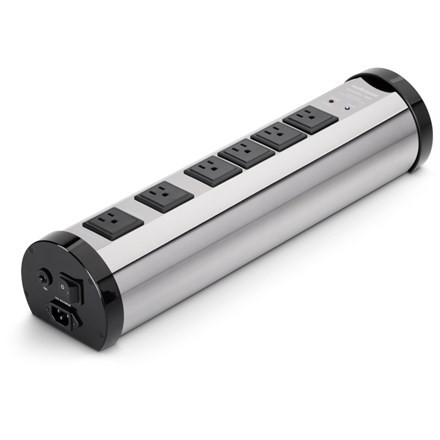
I did actually audition a couple of conditioners over the last 10 years. One was the original Audioquest Niagara 1000 which I was not a huge fan of. I also tried an older Nordost Thor power conditioner. Again, was cool to have them in the system knowing my gear was being fed the cleanest power I could feed them but in all actuality they did nothing to change the sound of my system. The Niagara 1000 actually made the sound a tad worse at the time, within the system I had it in at that time. Eek.
I talk about that a bit in the video above, at the top of this page.
After 2-3 years without any kind of power conditioning product within my system (rather I have been using a $25 power strip) I decided to try the entry level Niagara 1200 from Audioquest. I also added a nice power cord, the BLIZZARD which sits near the middle of the quality ladder from Audioquest. A $2k package at full retail price, which is what I paid at Amazon.
I decided to try the Niagara 1200 for three reasons.
The reviews are stellar. Not only from reviewers but from those who have bought one. It is well loved and from what I have seen, roughly 9 out of 10 who buy one love it and some say it was one of the best decisions they have made for their audio system.
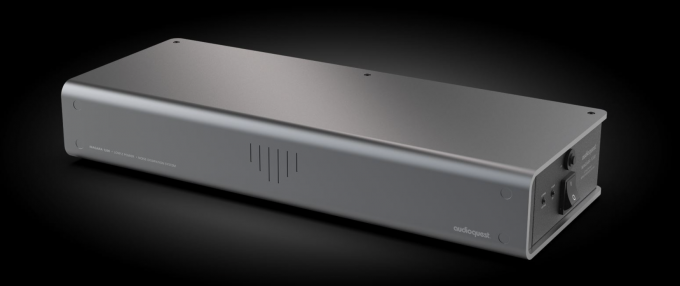
What is the Niagara 1200?
The Audioquest Niagara 1200 is a power conditioner. It cleans the noise from your electrical lines and does so very effectively. This means that noise is kept away from your system, speakers and output. Even noise you may not notice at first is removed.
When this happens, it is said that your music becomes more 3D, has more depth and is cleaner and clearer. It makes sense. If you have some low level grunge within your electric making its way to your audio system then it may smear your music, the details. This noise can keep your music from “breathing” or obscure the delicacy and details within the music.
The Niagara 1200 also serves as a hub for all of your gear to be plugged into. Two outlets on the back of the Niagara are even high current so one could even plug in their mono block amps or subwoofers right into them without any limiting or choking off the current.
The Niagara 1200 also acts as a high quality non sacrificial surge protector. Anything plugged into it will be safe from surges and strikes. Heck, this reason alone is why I bought the Niagara. My gear is expensive. I have spent the time and money assembling my reference system (been 9 months so far and it is almost 100% completed) for synergy, magic and beauty. To have a bad storm take something out would be awful.
The Niagara 1200 does triple duty here. It cleans your power, it acts as a main hub for your components to be plugged into and it protects said components from damage.
Some say and claim that it even improves the sound of your system.
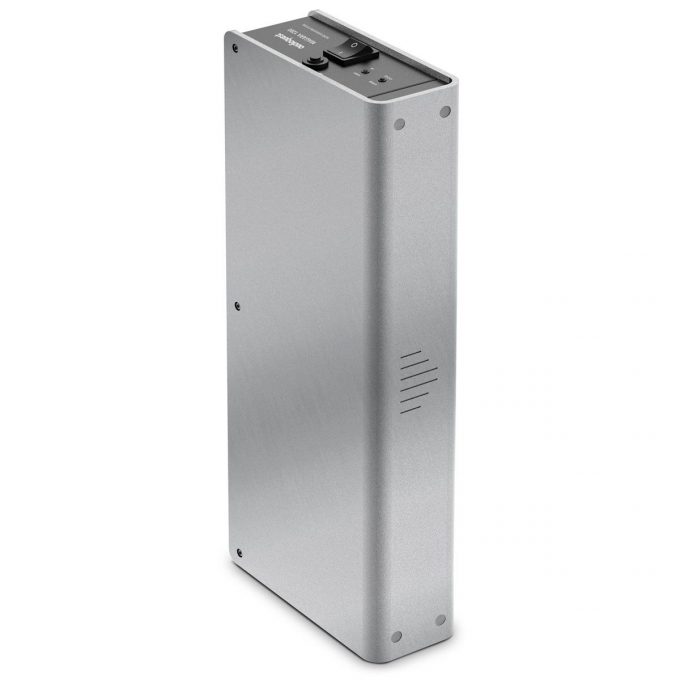
Since I have $50k worth of components in my system I realized that the $1295 cost of the Niagara was peanuts for what it offered, even if it did nothing to the sound of my system. As long as it did not effect the sound in any king of negative way (which some power conditioners may do) it would be a no brainier within my system.
Sure I could go higher up the chain in the Niagara line (the 300o for example) but for my system, that would not really be needed. The 1200 had the outlets I needed and the protection I needed.
I also know that some manufactures produce higher up and much more pricey models because they know audiophiles will spend more, always thinking that they are getting “better”.
After speaking with a few people who had the 1200 and upgraded to the 3000 I was happy buying the 1200 as none of whom I spoke with (three people) noticed any kind of audible improvement between the two within their systems ; )
The 3000 has an extra feature where it stores current and allows your amps to have access to this on demand current if needed for peaks. I will never need this as I listen at moderate and low volume and the amps I use are usually low wattage anyway.
I never stress the Pass Labs XA60.8 mono block amps into my 94 DB efficient Fleetwood Deville speakers. So for me, the 1200 made the most sense. It is also $2000 less expensive than the 3000 which is a nice chunk of cash to save.
When the Niagara 1200 arrived I was immensely and instantly impressed with its build quality and design. The build was astonishing and coming it an close to 20lbs, it felt like a fancy CD player or DAC. The looks are so much better than the older 1000, which this model is based on. In fact the only differences between the two (new and old) is that the 1200 has an extra high current outlet and an all new design (a much better design btw).
I was worried it would degrade the sound of my system like I found the 1000 did (due to the synergy of the system back then) but again, I did not know for sure as the system I have now is 100% different from what I had back when I tried out the 1000. Synergy truly is the key to a magical audio system.
My system back then leaned slightly to the brighter side where today my system is more about warmth, body, 3 dimensionality and a human organic touch to the sound.
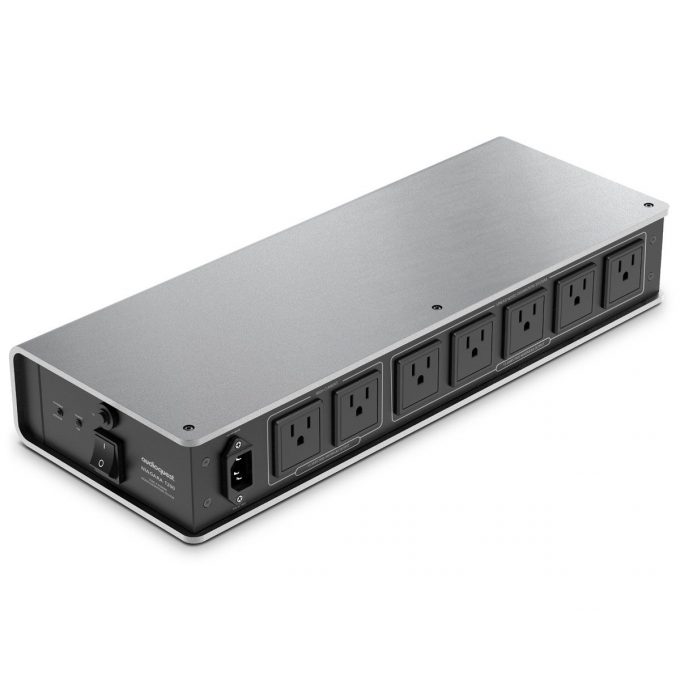
Trying it out vs my $25 Power Strip
When I first put in the Niagara 1200 and removed my $25 power strip I did hear a small difference right off the bat. I heard a slight (maybe 5%) change in the energy. In the clarity. In the depth. It had slightly more “shine”. I left it in for a while and after a week or so I swapped back to my old $25 power strip to see what would happen when I went back to the el-cheapo strip.
The sound became a little more muted, a touch more dark and less expansive with the el-cheapo strip but again, only by a small amount. Everything sounded great, just a little more dull and less focused.
After a few days I placed the Niagara back in and the snap, clarity and shine were there again, though SLIGHT. The system sounded tight, focused, clean and yet still retained the magic soundstage and warmth I spent so much time working on. The little noise I heard within the system was now gone, zilch. Pure silence.
When your system has a canvas of black silence the music will indeed appear with more energy, life and 3 dimensionality. There is simply no noise, no grunge and no nasties getting in the way to smear and hinder it. It’s like an open window one a warm sunny day during golden hour. The music is allowed to flow, breathe and sing.
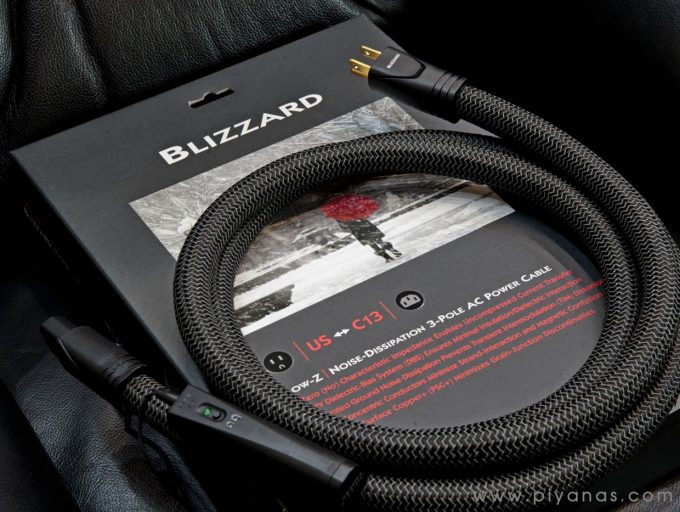
Oh, and you will need this as well…
One thing I haven’t talked about yet with the Niagara is that it does NOT come with a power cord. In the box you will find the 18 lb muted matte black box and that is all. I do feel this is ridiculous for a $1295 product that plugs into a wall. At the same time, I know audiophiles and most of them will end up using a fancy high end power cord they have laying around.
Audioquest recommends one of their own fancy power cords to bring the most from the Niagara. Many friends of mine own THIS power cord from Audioquest with their Niagara power products.
For me, that was a bit $much$ for a power cable so I went down the ladder to the Blizzard, which I feel is the best bang for the buck in the AQ lineup. I used to own a Thunder, Hurricane and Tornado power cable from Audioquest and my findings after a year with them told me that they were overpriced for what they brought to my system.
The Blizzard is still pricey for a power cord but it’s quality and is a perfect fit for the 1200 IMO. All one may ever need for it.
All in all, this Niagara 1200 setup cost me around $2,000 retail or 1/25th the cost of my total system retail cost.
It brought me protection, lower noise, a great looking hub for my components and it also did improve the sound of the system, bringing it more into focus than before. It’s a small sound change but when I figure in all that the Niagara is doing it was a 100% keeper for me.
I had 30 days to return it and the cable as I bought mine from Amazon using Prime. I spent 29 days evaluating and on day 30 I knew it was staying within the system.
No, I do not feel the 1200 is snake oil, not at all. But it’s also not needed for everyone with an audio system.
I feel even this entry level Niagara 1200 is only worth it for system that are higher end, transparent, revealing and where one has real money invested and protection is desired. Do I feel the Niagara is worth it for a $1000 system? NO NO NO. A $10,000 System? NO, not really. More than that, well, that choice is ultimately yours of course but I can say that I feel better knowing that the piece sits in my system. It’s rock solid, looks amazing and does what it advertises that it does. Is it a necessity? Not for everyone but for me I did need something in the power conditioning realm. I checked out Shunyata, Furman and Audioquest and the most positive reviews I have seen (from users/buyers) were with the Niagara Line. Seems most are happy with it. I was not blown away by it bit did sense minor improvements within the system.
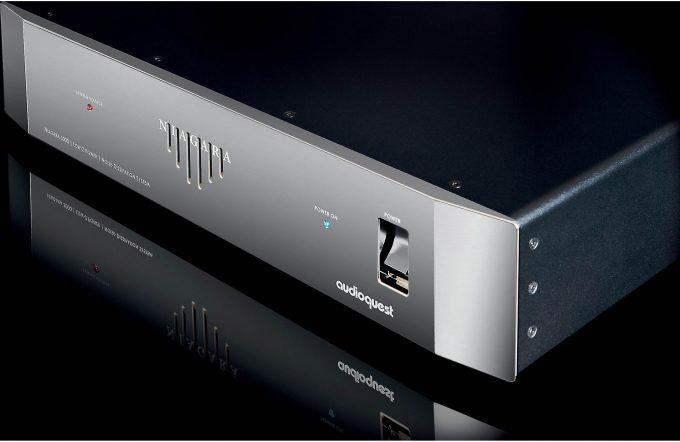
MORE INFO ON THE AUDIOQUEST NIGARA and WHERE TO BUY?
Link to the Niagara 1200 at the official AUDIOQUEST web page for it (has more tech info)
Buy the Niagara 1200 from Amazon Prime (with a 30 day return policy) HERE
Buy the Blizzard Power Cord at Amazon Prime HERE
Some buy this cord, it’s not as pricey
Some buy this cord, for the outright best quality
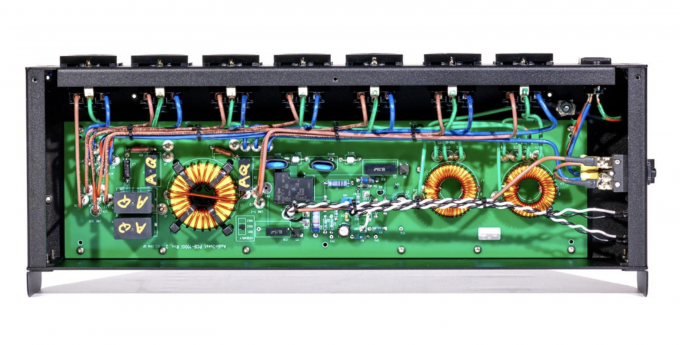
The Niagara 1200 did well for my reference system in 3 ways.
#1. It did take the noise level to zero.
#2, It is protecting all I plug into it.
#3. It did add slightly more dynamics, clarity and composure.
I bought the 1200 and evaluated it during the 30 day period/window I had for a return. I kept it as I loved what it did for my reference system for so little cost (in comparison to the rest of the system).

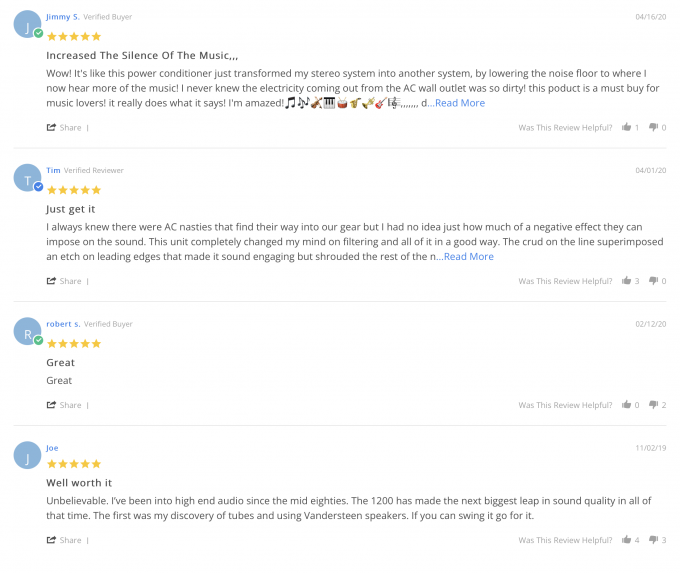



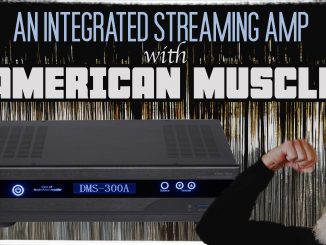
I have found that power conditioners give a slight improvement, similar to what you are describing. Some give better results than others, and some work better with source components or computers rather than amplifiers. And the cord is important. I have had cords that degrade the sound, and some that improve the sound.
I purchased the 1200 and my headphone system went dead silent. It was a large improvement and though I have a 30k plus system two years later, I still use the 1200.
Thank you for review this power conditioner! I bought one bases on your input. It is really good! I have a cheap Panamax 4300 and it is more like a fancy surge protector with separate bank, regulate nothing. I have horrible electric so-on in my rental place and can’t do much outlet upgrade. This unit has sold a lot of my random dynamic drop, noise etc; that is immediately out of the box performance with a pc power cord. Too bad that my funding is limited atm, otherwise, I would do the 3000.
If you were using a twenty five dollar power strip for your system, I’m not surprised the Audioquest made a difference. Anyone contemplating mains treatment equipment should (where feasible) improve their basic electrical infrastructure before investing in any kind of power conditioner/distribution solution. In fact, anyone aspiring to good sound should fix their electrical infrastructure before investing in gear at all!
Well said – I’ve found the Niagara 1200 to be a nice boost in my big-city apartment (whereas I didn’t really need it when I was in the suburbs).
If you’re still looking for your forever DAC — I’d suggest you give the Meitner MA3 a home listen. Takes a while to break in. Excellent built-in streaming, and Meitner is known for being modular (upgrades over time, if of interest). Easy to find demo units in the $7k range, and for me personally much more to my taste than anything by Chord. I think it would synergize well with Pass. Will have a touch of warmth and fluidity, great timing, rhythm and dynamics. Trickle-down tech from their flagship $30k DAC (which is great, but much more than I personally want to invest in digital).
The totaldac is still my favorite after all this time and what I use everyday (meat on the bones, room-filling sound, just beautiful tone, and it’s modular — measures terribly according to some, but it’s music to my ears). It’s a pain to audition in the US (if you don’t like it, you need to cover return shipping to France…) so I tend not to recommend it other than to the super obsessed lol.
This seems to be a power line filter, a variation on the surge protection circuitry patented by Zero Surge. But you can protect your expensive equipment from power line surges (with power line filters which don’t wear out like cheap MOV surge protectors) at far lower cost with the Zerosurge.com units, which I’ve bought used on eBay for less than $100.
Thanks for the review. I always thought the 300 would be better than the 1200, however you have proved to me Beyond a doubt that I can put the difference in my pocket.